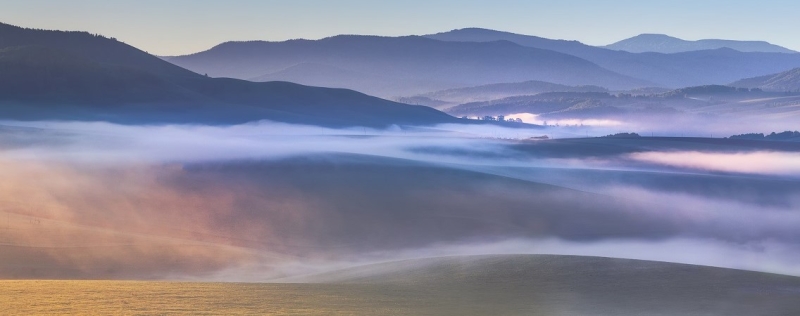
In our country there are 102 nature reserves and 42 national parks – enough to make a travel plan for years to come. Some of them are not always open to tourists, but there are also all-season locations. We talk about Russian national parks that are suitable for a trip at any time of the year.
“Krasnoyarsk Pillars”
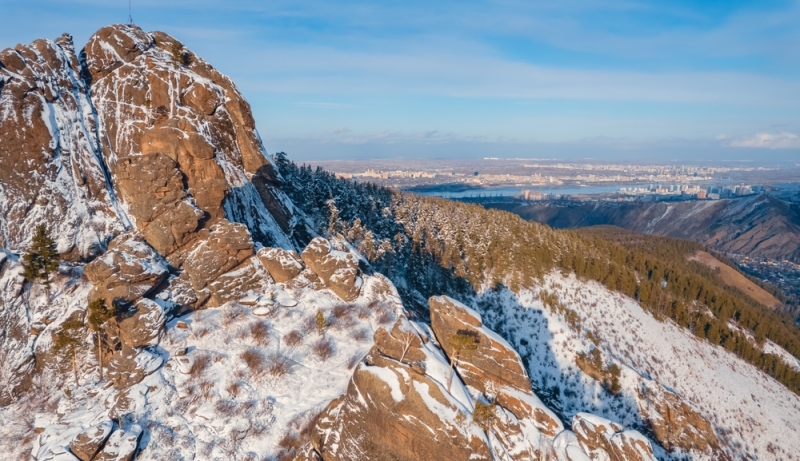
This nature reserve is part of the Eastern Sayan Mountains; it is located on the right bank of the Yenisei. The pillars are rocks of a bizarre narrow and elongated shape, as if they came out of the alien landscapes of the movie “Avatar”. Their height varies from 60 to 600 meters. Scientists have still not come to a consensus about their origin: it is believed that the formations appeared due to the pressure of underground magma, and the unusual shape was carved by winds and rains. Hikers, rock climbers, climbers and simply admirers of beautiful views come here.
How to get there: from Krasnoyarsk you can get there by regular buses (No. 19, 50, 50a, 50k, 78). Get off at the “Turbaza” stop, then take a taxi or walk along the asphalt road for about 7 kilometers. You can also take bus number 37, which goes to the stop “Stolby «East Entrance»”.
Where to stay in Krasnoyarsk:
In the Hutorok mini-hotel, closest to the entrance to the reserve (score 8.4) – from 1,900 rubles per day*.
In the house-hotel “Classic” (score 10) – from 5,000 rubles per night*.
In the four-star hotel “Hilton Garden Inn Krasnoyarsk” (score 10) – from 6,000 rubles per day*.
“Lena Pillars”
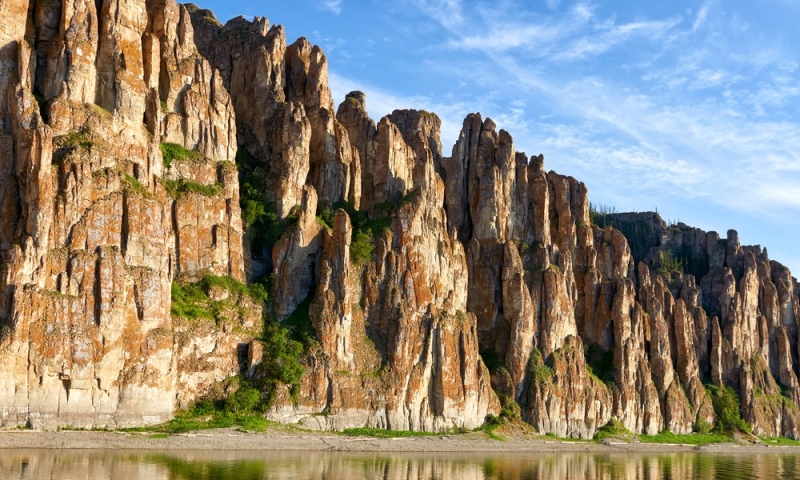
Another impressive pillars are located in the Republic of Yakutia, near the Lena River: the majestic national park stretches 40 kilometers along the coast and covers an area of almost 500 thousand hectares. These are limestone rock formations whose height reaches up to 200 meters. Interestingly, in addition to the rocks themselves, you can see many other interesting locations here: for example, the northern sandy desert “Saamys Kumaga” with real tukulan dunes, the site of an ancient man, caves with petroglyphs (rock paintings of primitive people) and the Ust-Buotama bisonarium – nursery of forest bison, once brought to Yakutia from Canada. The national park also includes the Sinyaya and Buotama rivers, on which there are also pillars, albeit slightly smaller than the Lensky ones.
How to get there: in the warm season, when navigation on the Lena River is open, boats go here from Yakutsk. In the cold season, it is better to join an excursion and get there by all-terrain vehicle.
Where to stay in Yakutsk:
In hostels “Rus – Yakutsk” (rating 8.7) – from 2,400 rubles per day*.
At the Lily of the Valley Hotel (rating 9.0) – from 3,300 rubles per night*.
At the Orto Doidu Hotel (rating 8.6) – from 6,300 rubles per day*.
“Meshchera”
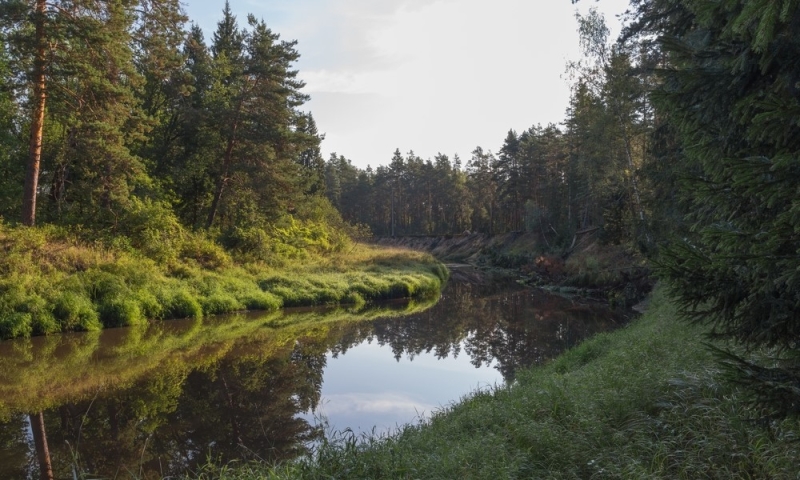
Since 2016, Meshchera has been two united national parks: the one of the same name (on the territory of the Vladimir region) and Meshchersky (the lands of the Klepikovsky and Ryazan districts of the Ryazan region). It was created to preserve the unique landscape and historical and cultural complexes of the Meshchera Lowland. The park includes wetlands, forested areas, many lakes, rivers, meadows, fields and villages where local residents still carry out traditional economic activities. Some settlements of Meshchera are associated with artists: Spas-Klepiki – with the poet Sergei Yesenin, the village of Grishino – with the writer Konstantin Paustovsky, and the village of Egorovo – with the artist Abram Arkhipov. Many tourists who come to relax in Meshchera go to the forests to pick mushrooms and berries or spend time fishing.
How to get there: from Moscow – from the Shchelkovsky bus station by bus to the Gus-Khrustalny stop or by train Moscow – Vekovka from the Kazansky station (get off at Torfprodukt station (Tasinsky crossing)).
Where to stay:
At the Pearl Hotel of Golden Ring near Vladimir (rating 8.9) – from 4,200 rubles per night*.
In the eco-park “Polyany” near Ryazan (score 10) – from 4,400 rubles per night*.
In the four-star Festival Hotel in Spas-Klepiki (rating 8.3) – from 6,600 rubles per night*.
“Alania”
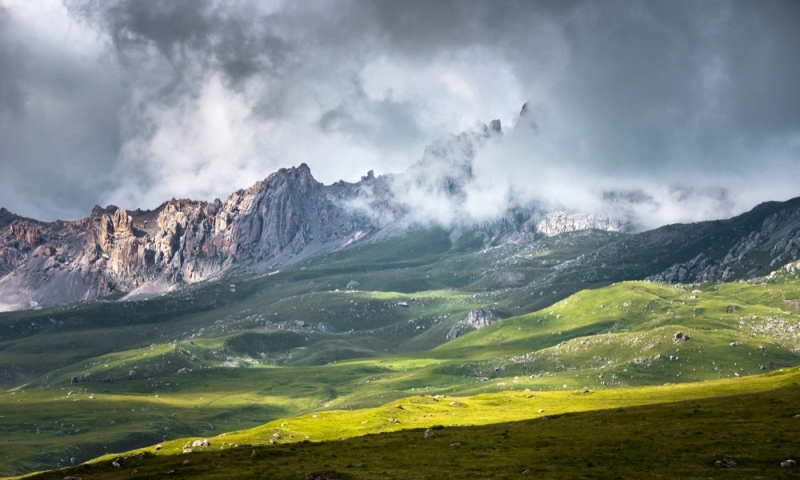
The heart of Ossetia, this national park is located on the northern slope of the Central Caucasus ridge, in the highlands. The minimum altitude of its territory is 1,350 meters above sea level, the maximum is 4,646 meters. The park amazes with snow-capped mountain peaks, subalpine meadows, dense forests and an abundance of unusual flowers and herbs. On the territory of Alanya there are several historical and cultural complexes – for example, battle towers, sanctuaries (Digori Izad, Mother of Zadaleska), residential and defensive fortifications (White Greek Castle, Frigate Castle in Hanaz, monuments of the village of Kumbulta), burial structures (crypt burial grounds, Nart monuments Matsuta, catacomb burial grounds in the villages of Donifars and Kumbulta), roadside monuments – tsyrts. No less interesting are the beauties of nature: the longest glacier in the Caucasus – Karaugomsky, lakes of glacial origin (Mikelay, Gularskie, Bartuiskoe, Madzaskatsad), numerous waterfalls (Galdaridon, Taymazi, Soldat, Three Sisters). People come here for mountain hiking, horseback riding, extreme cycling, mountaineering and, of course, Caucasian hospitality.
How to get there: from the Vladikavkaz bus station there are minibuses to the village of Chikola, where the Alanya tourist office is located. From there you can take a taxi or use a shuttle bus.
Where to stay in Vladikavkaz:
At the Boomerang Hotel (rating 9.2) – from 2,600 rubles per night*.
In the health center “Wind Rose” (score 10) – from 6,800 rubles per night*.
In the four-star hotel “DoubleTree by Hilton Vladikavkaz” (rating 10) – from 8,500 rubles per day*.
“Yugyd Va”
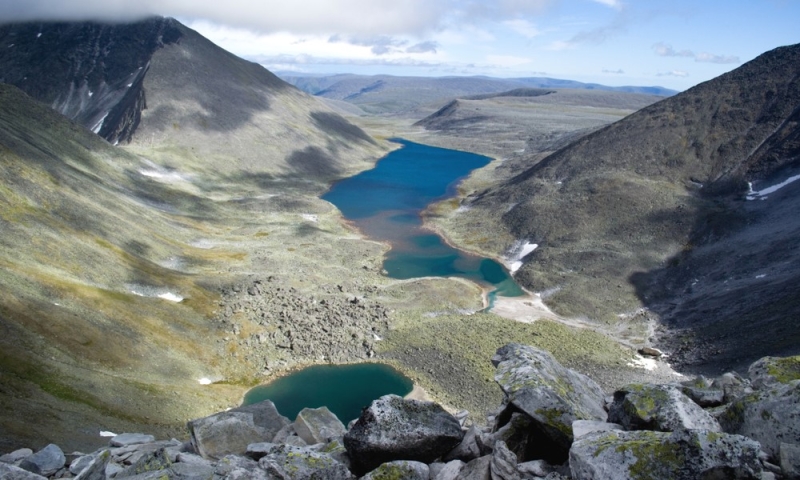
This national park in the Northern and Subpolar Urals in the southeastern part of the Komi Republic is the largest European tract of primary boreal (northern) forests. Only here is the only taiga preserved in the Northern European region, untouched by human economic activity. Yugyd Va is also the largest national park in Russia: its area reaches 1 894 133 hectares, and its length is more than 300 kilometers. The park contains the Ural Mountains, the Pechora River (one of the cleanest in Europe), and 16 types of unique ecosystems (from subalpine mountain tundra to swamps) with endemic species and relict plants. In winter you can see the aurora borealis here. Among the man-made monuments of the park are the 11th-century rock sanctuary with the “Grotto Arch” altar, the lower gate of the Podcherem River (“Kyrta-Varta”) with the remains of ancient sites, the Sibiryakovsky tract and the huts of the Old Believers near the Shchugor and Vangyr rivers. This is a great place for ecological and educational tourism.
How to get there: you can get to the park from Syktyvkar or Ukhta in three ways.
Through the city of Vuktyl – from Ukhta there is a regular bus No. 505, in spring and summer planes fly and boats go along the Shchugor River, then on SUVs.
Through the city of Inta – from Syktyvkar on Tuesday and Thursday planes fly to Inta, and in Inta you can also get off the train from Moscow, St. Petersburg, Nizhny Novgorod and Adler. It is easier to order transport at the office of the Inta branch of the park: delivery is carried out to the bases “Orliny”, “Zhelannaya”, “Sanavozh”, as well as to the crossing on the Kozhim River.
Through the city of Pechora – trains go to it from Moscow or St. Petersburg, and planes fly from Syktyvkar on Tuesdays, Thursdays and Fridays, you can also take a helicopter. There is a bus from Pechora to the village of Konetsbor, from there you can walk or hire a boatman to the village of Aranets.
Where to stay:
In the mini-hotel “Otelika” in Syktyvkar (rating 9.4) – from 2 700 rubles per day*.
In the three-star Avalon hotel in Syktyvkar (score 10) – from 6,200 rubles per night*.
At the Dragonfly Hotel in Ukhta (rating 9.8) – from 4,100 rubles per night*.
In the four-star boutique hotel STATUS in Ukhta (rating 9.8) – from 8,100 rubles per night*.
“Salair”
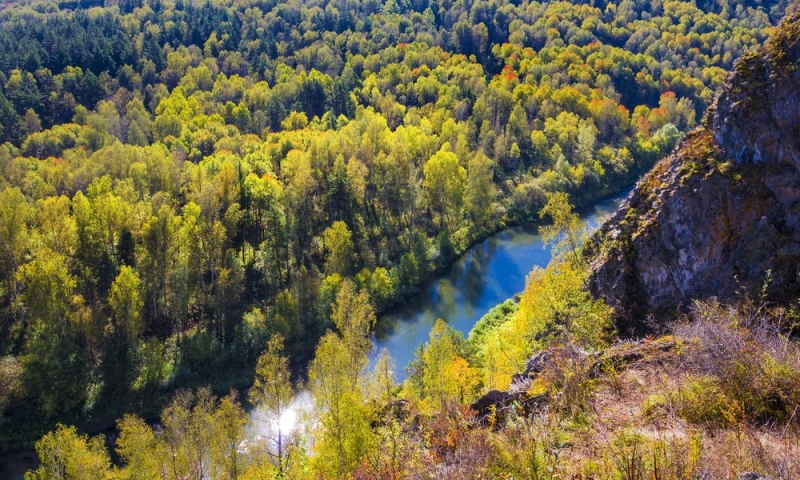
This park is located in the south of Western Siberia in the eastern part of the Altai Territory. It is included in the list of 200 regions with the richest biodiversity on our planet. Salair is a lowland area with dense forests and taiga, dissected by river valleys. The relict plants here are so numerous that in the summer the park resembles a jungle, but in the spring people come here to admire the flowering of ephemeral plants, covering the local meadows with a multi-colored carpet. The park can be explored on foot, on horseback or by river rafting. Celebrations and festivals are constantly taking place on the territory of Salair – for example, at the end of February the Siberian Maslenitsa will be celebrated, in March there will be an Winter Fishing Festival, at the beginning of April – a ski marathon, and at the end – a race.
How to get there: with an organized group of tourists from Kemerovo, Novokuznetsk or Novosibirsk.
Where to stay:
At the “Smart Hotel KDO” in Novokuznetsk (score 10) – from 2,100 rubles per night*.
In two-bedroom apartments Home Hotel on Oktyabrskaya Street in Belovo – from 2 300 rubles per day*.
In apartments “Kirova 81” in Leninsk-Kuznetsky (rating 8.1) – from 2,500 rubles per night*.
“Call of the Tiger”
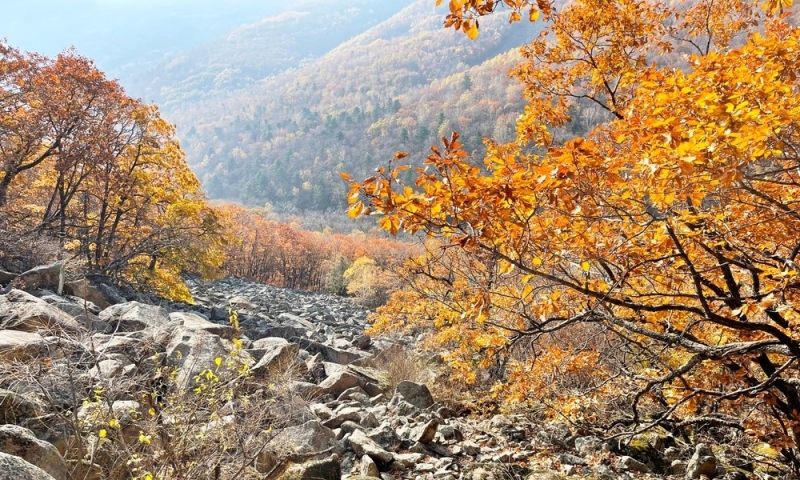
The park is spread over 83 thousand hectares in the south-eastern part of Primorsky Krai. It is known as a habitat for rare animals: the Amur tiger, flying squirrel, Far Eastern forest cat, Far Eastern leopard, Himalayan bear, goral and musk deer. Of course, with so many dangerous wild animals in the Tiger’s Call, only regulated tourism is possible, but the beauty of the Primorsky Territory is amazing and worth any restrictions. Along the watersheds and stream valleys there are hiking trails that run through picturesque places and allow you to explore the most interesting tourist sites, including the waterfalls of the Milogradovka River basin.
How to get there: with an organized tour or by car from Vladivostok.
Where to stay:
At the Kningan mini-hotel in Arsenyev – from 2,600 rubles per night*.
In the three-star hotel “Boomerang” in Nakhodka (rating 9.1) – from 4,000 rubles per night*.
At the Rica apart-hotel in Nakhodka (rating 8.8) – from 5,100 rubles per night*.
“Valdaisky”
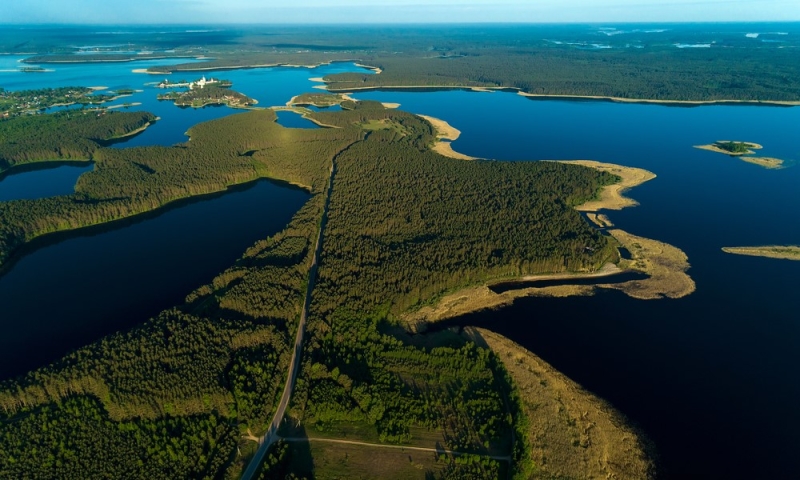
The park is located in the northern part of the Valdai Hills in the Novgorod region. The boundaries of the park approximately correspond to the boundaries of the drainage basins of lakes Borovno, Valdai, Velye, Seliger and the upper reaches of the Polomet River: it is the unique system of drainage basins that makes the landscape of Valdai so unusual and picturesque, and the fauna and flora so diverse. Tourists come here to walk along numerous ecological trails. The shortest ones can be walked in 40 minutes, but the Great Valdai Trail is already a plan for a five-day hike. On the territory of the park there are 82 historical sites, including ancient sites, fortifications, villages, burial mounds, as well as monuments of wooden architecture and ancient noble estates.
How to get there: The Moscow-Pskov train, departing from the Leningradsky station, passes through the city of Valdai. The park’s tourist office is located in the city, where you can join an organized tourist group and explore the park on your own.
Where to stay:
At the Valdai country hotel. Dream space” – from 2,900 rubles per night*.
At the Amaks Valdai Dawns hotel (rating 8.7) – from 4,400 rubles per day*.
At the Valdai Eco Club resort hotel in the city of Korotsko (score 9.0) – from 4,500 rubles per day*.
“Onega Pomorie”
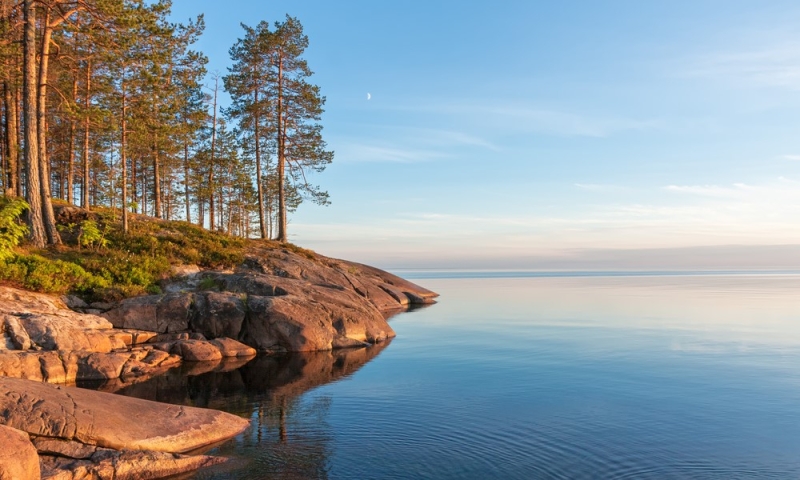
In the northern part of the Onega Peninsula in the Arkhangelsk region there is a park known for its animal diversity: white-tailed eagles, ospreys, golden eagles, porpoises, high-browed bottlenose whales, beluga whales, walruses, harp seals and seals live here; Whales also come here – sei whales and fin whales. Many inhabitants of the White Sea region are endemic, almost all of them are listed in the Red Book. People come here for educational, sports, health and expedition tourism. The most popular territories of the “Onega Pomerania” are located between the villages of Letnyaya Zolotitsa, Pushlakhta, Lyamtsa and Lake Vygozero: the northern landscapes, combining taiga, lakes, valleys, swamps and forests, are especially beautiful here.
How to get there: all year round you can get there by AN-2 aircraft with 13 seats – it departs from Vaskovo airport near Arkhangelsk and flies to villages Lopshenga and Letnyaya Zolotitsa. In winter, there is also an option to get there by snowmobile from Severodvinsk, in summer – by UAZ or boat from the same place.
Where to stay in Severodvinsk:
At the Lime apart-hotel (rating 9.3) – from 3,200 rubles per night*.
At the Hermitage mini-hotel (rating 8.9) – from 3,800 rubles per night*.
At the Nikolskaya Gavan Hotel (rating 9.5) – from 4,200 rubles per night*.
*Prices are current at the time of publication.

